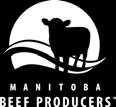

E-Newsletter
Filming for Season 36 of Great Tastes of Manitoba recently got underway and MBP has five recipes planned along with a mini-documentary set in the Birtle area. Watch the E-Newsletter, Cattle Country , MBP website & social media channels for more information! Chef Anna Hymers photo credit: Kamp Photography
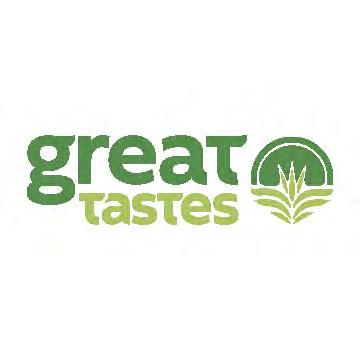

edition...
18, 2025

Reminder
Manitoba Beef Producers is accepting applications until Friday, December 12, 2025 for consideration for the local awarding of The Environmental Stewardship Award (TESA). Interested producers can either nominate themselves, or be nominated by another individual or an organization. More details and the application form can be found by clicking the graphic on page 10.
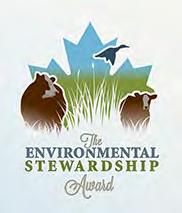




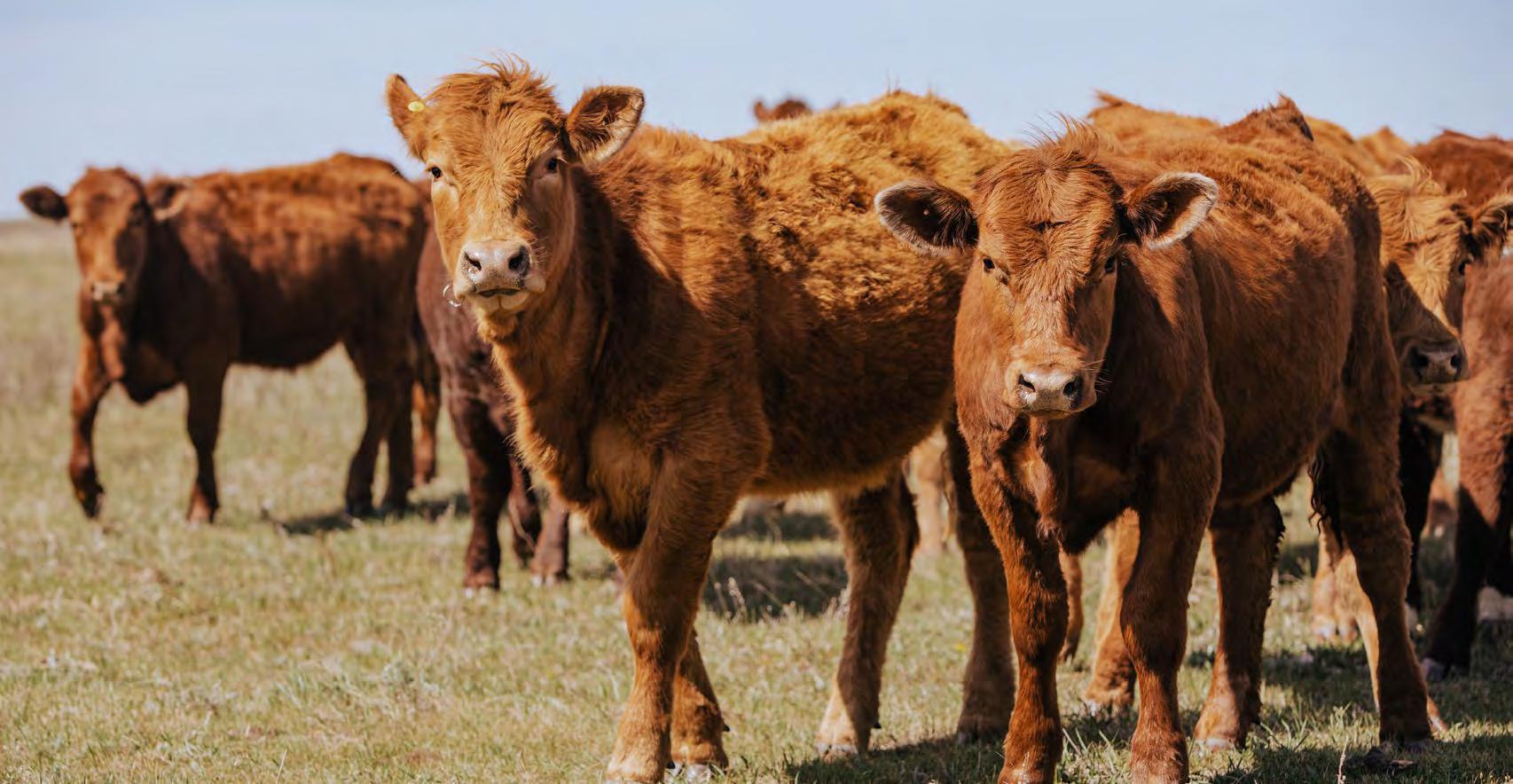
Fire Bulletin #53
(July 17, 2025 Province of Manitoba media release)
The Manitoba Wildfire Service advises the province is at a high to very high fire danger level, with a section of extreme fire danger in the northeast, while the south and southwest have a moderate fire danger.
The primary evacuation reception centre in Winnipeg is now located on the second level of the RBC Convention Centre at 375 York Ave. Evacuees can attend this location to register with the Canadian Red Cross, and to access supports and services. Evacuees can also call 1 (800) 863-6582
In response to the need for shelter for wildfire evacuees, Emergency Social Services continues working with the Canadian Red Cross to operate congregate shelters in Winnipeg including at the RBC Convention Centre at 375 York Ave, Leila Soccer Complex at 770 Leila Ave and the University of Winnipeg Axworthy Health and RecPlex at 350 Spence St.
Manitoba Wildfire Service has cancelled all burn permits for the Burn Permit Area, with no new burn permits issued at this time. Additionally, travel permits are required within active fire boundaries. To view active fire boundary maps, visit www.gov.mb.ca/conservation_fire/FireMaps/fireview/fireview_map.html. To apply for a travel permit, contact a Natural Resources and Indigenous Futures district office and visit www.gov.mb.ca/nrnd/co/index.html to find a location.
Manitoba continues under a provincial state of emergency, under the Emergency Measures Act due to a wildfire season that is now the worst on record in the last 30 years, with more than one million hectares (ha) of area burned in the province. The state of emergency is in effect until Aug. 8 and if necessary, may be extended.
Manitoba Parks advises visitors to check www.manitobaparks.com for the latest information before heading to a provincial park.
Fires of note
The Manitoba Wildfire Service continues to respond to 118 active wildfires across the province, a total of 313 wildfires to date, well above the average for this date of 229 total fires.
Fires of note include:
East region:
• Fire EA061 remains out of control at approximately 293,480 ha. A closure and mandatory evacuation order continues for parts of Nopiming Provincial Park and the entire areas of Wallace Lake and South Atitaki provincial parks. PR 314 remains closed through Nopiming Provincial Park, as well as PR 304 east of Bissett. The southern portion of Atikaki Provincial Park is also closed, including the Bloodvein and Gammon river corridors and Aikens Lake.
West region:
• Fire WE017, located near Sherridon and the city of Flin Flon, is approximately 347,100 ha and is out of control. For the safety of personnel, boaters are asked to avoid waterways being utilized by Manitoba Wildfire Service tankers and aircraft.
• Fire WE025, located near Mathias Colomb Cree Nation (Pukatawagan), is approximately 62,100 ha and is being monitored. The fire is contained around Mathias Colomb Cree Nation (Pukatawagan) but a mandatory evacuation order continues.
Fire Bulletin #53
• Fire WE028, located 10 kilometres (km) from Bakers Narrows Provincial Park, is approximately 7,190 ha and is out of control.
• Fire WE052, located 20 km from Snow Lake, is approximately 17,850 ha and is out of control. A mandatory evacuation order is in place for the town of Snow Lake. Wekusko Falls Provincial Park is closed due to wildfires and a mandatory evacuation order is in effect for park users.
• Fire WE053, located 16 km from Snow Lake, is approximately 7,445 ha and is out of control.
North region:
• Fire NO002, located near the town of Lynn Lake, is approximately 84,500 ha and is out of control.
• Fire NO042, located 14 km southwest from the town of Lynn Lake, is approximately 13,100 ha and is out of control. A mandatory evacuation order is in place for the town of Lynn Lake and Marcel Columb First Nation.
• Fire NO005 located near Pimicikamak Cree Nation (Cross Lake), the Incorporated Community of Cross Lake, Jenpeg Generating Station and Whiskey Jack Landing, is approximately 153,360 ha and is out of control.
• Fire NO010, located near Tataskweyak Cree Nation (Split Lake), is approximately 25,225 ha and is out of control. A mandatory evacuation order remains in place for Tataskweyak Cree Nation (Split Lake).
• Fire NO026, located 11 km from the town of Leaf Rapids, is approximately 10,000 ha and is out of control. A
mandatory evacuation order is in place for the town of Leaf Rapids.
• Fire NO047, located 25 km from the town of Leaf Rapids, is approximately 15,525 ha and is out of control. A mandatory evacuation remains in place for the town of Leaf Rapids.
• Fire NO061, located 14 km from the city of Thompson, is approximately 16,370 ha and is out of control.
• Fire NO079 located near Kistiganwacheeng (Garden Hill Anisininew Nation), is approximately 2,865 ha and is out of control. A mandatory evacuation remains in place for the Nation. Island Lake (Stevenson Island) is also beginning evacuations today.
• Fire NO129, located four km from Kischewaskahegan (York Factory First Nation), is approximately 45 ha and is being held.
Information and resources for evacuees
For the safety of both evacuees and frontline and firefighting personnel, the province is reminding Manitobans not to enter areas under a mandatory evacuation until local authorities identify the situation is safe and evacuees are able to return.
The Manitoba Emergency Management Organization recommends evacuees leaving their communities due to wildfire bring their medications, identification, phone chargers, important documents, any needed baby supplies and a change of clothing.
Visit MBReady at https://mbready.manitoba.ca for more information about emergency alerts and safety, as well as resources for evacuees such as:
Fire Bulletin #53
• registering with the Canadian Red Cross: https://gov.mb.ca/wildfire/evacu ees.html#wildfire-2025
• financial support: https://gov.mb.ca/wildfire/eva cuees.html#financial-support
• emergency shelters: https://gov.mb.ca/wildfire/eva cuees.html#shelter
• health resources: https://gov.mb.ca/wildfire/ev acuees.html#health-resources
• insurance: https://gov.mb.ca/wildfire/ev acuees.html#insurance
• returning home: https://manitoba.ca/wildfire/eva cuees.html#community-re-entry
All Manitobans returning to reopened areas are advised to be prepared to evacuate again with little notice and should prepare an emergency go kit. More information on emergency preparedness, including what to include in an emergency go kit, is available at www.gov.mb.ca/emo/guide/individuals.
For assistance, evacuees can dial Manitoba 211 from anywhere in Manitoba or email 211mb@findhelp.ca. For more information, visit https://mb.211.ca/get-helpnow/
General wildfire information
• latest road conditions and closures: www.manitoba511.ca
• burn restrictions for municipalities: www.manitoba.ca/wildfi re/burn_conditions.html
• important Manitoba wildfire information: www.manitoba.ca/wildfire
• emergency preparedness information including what to include in an emergency go kit: www.gov.mb.ca/emo/guide/individu als
• follow the Manitoba government on X (formerly Twitter) at https://twitter.com/mbgov
To report a wildfire, call 911 or the TIP line tollfree at 1-800-782-0076.

Applications due August 1!
Hot weather, safe travel: Preventing heat stress in animals
Heat stress and animal transport
Signs of animals overheating
• unsettled or lethargic
• vocalizing
• heavy mouth (or beak) breathing
• breathing fast
• sweating (horses and cattle)
• red, blotchy skin
• dehydrated (skin tent, dry gums, sunken eyes)
Animals cool themselves by
• heat evaporation from:
• lungs, by panting
• skin, by sweating
• seeking shade/shelter
• increasing air flow around their bodies
Pigs and birds cannot sweat!
They are at higher risk of overhheating.
Conditions increasing the risk of overheating
• body size (large)
• body condition (thin, fat)
• age (very young or old)
• lactating (require more fluids)
• pregnant
• full coated (insulated)
Assess each animal carefully!
Humid conditions increase overheating risks
Low humidity High humidity
Sweat evaporates easily because there is room in the air for more water vapor molecules.
Preventing heat stress in animal transport
Sweat builds up and won’t evaporate because the air is already full of water vapor molecules.
• Assess each animal before loading
• Plan route
• Schedule to reduce stopping and wait times
• Coordinate along supply line
• Know what to do when animals are overheating
Care for animals
• Hydrate animals before loading
• Gentle, calm handling
• Increase space for each animal
Monitor often. Take action!
• Communicate concerns to contact at destination
• Stop, unload and provide water, if required
• Re-route, if needed Plan
Maximize ventilation
• Keep trucks moving
• Open vents
• Increase air flow between animals (reduce loading density)
Protect from environmental conditions
• Avoid traveling during the hottest part of the day and in humid conditions
• Provide shade protection when parked for
• driver rest
• waiting to unload
• Keep driving to keep air flowing
• If misting to cool animals, use caution*
* Without good ventilation, misting could create conditions similar to a sauna.
Manitoba Government Investing More Than $189 Million in Safety Including Upgrades for Infrastructure in Western Manitoba
The Manitoba government is investing more than $189 million in infrastructure upgrades in western Manitoba including multiple highway rehabilitation projects, bridge repairs and culvert replacements, Transportation and Infrastructure Minister Lisa Naylor announced today.
“Our government values western Manitoba and is committed to making long-overdue investments in this region,” said Naylor. “Our government is making sure that critical infrastructure for local farming communities and residents is safe and functional for everyday use.”
The 18 projects include a bituminous rehabilitation on Provincial Trunk Highway (PTH) 5, for 15 kilometres north of PTH 2, along with structure replacements at the Assiniboine River at Spruce Woods Provincial Park and north of Holland on PTH 34. Additional projects include replacing several culverts and bituminous rehabilitation projects that will renew more than 115 km of highway including PTH 10 and Provincial Road (PR) 270 from the Trans-Canada Highway to PTH 25.
The Department of Transportation and Infrastructure recently completed work on a bridge over Epinette Creek on PTH 5 and is working on structure replacements eastbound and westbound on the Trans-Canada Highway at South Boggy Creek east of PR 340. Projects are in various stages of design and construction with all 18 projects expected to begin construction by 2026, the minister noted.
“Investing in the repair and rehabilitation of our highways is not just about improving infrastructure, it’s about protecting lives,” said Naylor. “Every upgrade we make enhances safety for drivers, agriculture equipment users and others in the community. A safer highway system means a stronger, more connected community.”

These projects support Manitoba’s Mult-year Infrastructure Investment Strategy, which outlines planned strategic projects in roads, highways, bridges, airports and flood protection over the next five years. The strategy can be found at www.gov.mb.ca/mti/myhis/pdf/2024_multiyear_infrastructure_investment_strategy.pdf
Additional details regarding Manitoba Transportation and Infrastructure’s capital projects can be found on an interactive map at www.gov.mb.ca/mti/mipmap/map.html.
MPI opens Fall Driver Z registration
(July 16, 2025 Manitoba Public Insurance media release) Manitoba Public Insurance (MPI) is opening registration to its popular high school education program, Driver Z, on July 23, 2025, at 8:00 a.m.
Driver Z will be offered in communities throughout Manitoba, using a mix of eLessons, virtual, and in-person classes. One of the main components of the program is the in-car learning sessions that give students the time they need behind the wheel to gain the knowledge and skills necessary to drive safely and prevent collisions.
The Driver Z Course Finder will be posted on the MPI website on Friday, July 18, so customers can plan ahead and determine which course offering works best for them.
To start the process, parents and guardians are strongly encouraged to complete the first two steps of the registration process before registration day:
1. Visit an MPI Service Centre or an Autopac broker with the new driver to set them up as a customer. A list of required documents that you must bring with you to verify their identity is available on MPI’s website.
2. Purchase the Driver Z program, which can be done at the same time as the customer set up.
With the first two steps completed beforehand, on the day of registration, parents and guardians can sign up their child for Driver Z in one of four ways:
• By visiting one of the 300 Autopac brokers across the province (check
operational hours to ensure the location you plan to attend is open at or before the 8:00 a.m. registration start time).
• Through the MPI Contact Centre at 204985-7000 or toll-free at 1-800-6652410.
• At any MPI Service Centre – centres will be opening early on July 23 to help customers prepare ahead of registration at 8:00 a.m.
• By calling the MPI Driver Education phone line at 204-985-7199 or toll-free at 1-800-261-9928.
“MPI recognizes the high demand for this program and that many customers are not always successful when trying to register their child for Driver Z,” said Satvir Jatana, President & CEO of MPI. “We have heard those parents and are committed to making changes so Driver Z is accessible to those who need it.”
MPI has increased capacity for the Fall offering of Driver Z to nearly 4,700 seats, of which 2,126 are outside of Winnipeg. By comparison, in Fall of 2024, there were 4,200 total seats available. MPI is on track to have 10,000 seats available to new customers this year, which will return registration to pre-Covid registration levels.
“In addition to more seats, our Contact Centre will be prioritizing Driver Z registrations on July 23 and our Driver Education phone line will also be opening earlier than normal, at 8:00 a.m.,” said Jatana. “We realize these are short-term solutions, but we are doing what we can in the interim as we continue to make inroads on sustainable long-term changes.”


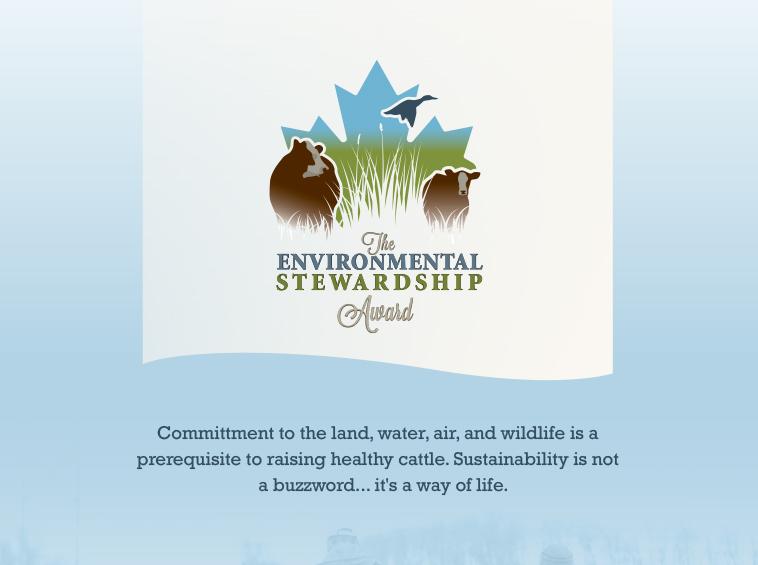

TRACEABILITY
Traceability refers to systems that allow the tracing of an animal or animal product all the way through the supply chain, from birth to slaughter. A fully functional livestock traceability system is based upon three pillars:
Animal Identification
This pillar supports the ability to identify animals as they are moved through the production system.
Premises Identification
Provincial PID programs were established to help plan for, control, and prevent the spread of agricultural diseases. If you own livestock in Canada, contact your provincial government to create a Premises Identification (PID) account and receive a PID. A PID is a unique identifier assigned to a specific piece of property. It is also used as part of an early warning system to notify animal owners of a natural disaster such as a flood or fire or a disease outbreak, that could impact their animals or operations. Completing a PID application and keeping your information up-to-date, are important actions for protecting your animals and those of other Canadian producers.

Animal Movement
This pillar is used to record the movement of uniquely identified animals from one known location to another, along with the date of the move, throughout the animals life span.
In the event of a disease outbreak, knowing the movement history of an animal is very important in supporting efficient trace-back. Full animal/enhanced movement tracking has now been addressed in the proposed changes to traceability programs.
As a whole the traceability system plays a vital role in managing risks such as infectious diseases, food safety issues, and emergencies like natural disasters. Traceability also supports public trust and protects market access for Canadian products.
CCIA
The Canadian Cattle Identification Agency (CCIA) is a nonprofit, industry led organization established in 1998 to support Canada’s national Livestock Identification and Traceability Program. This program enables efficient traceback and containment of serious animal health and food safety concerns within the livestock industry.
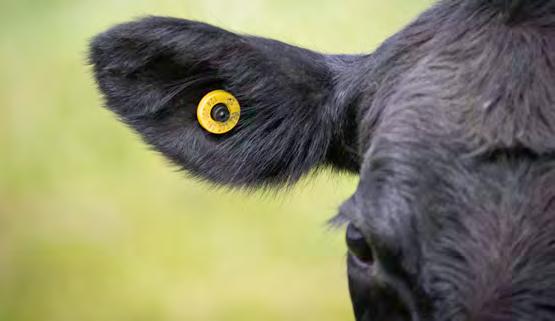
As a Responsible Administrator for the federally mandated Livestock Identification and Traceability Program, CCIA oversees traceability for beef cattle, bison, and sheep, with cervids and goats to be included under the new regulatory updates (Canada Gazette Part ll). In Quebec, CCIA’s responsibilities are limited to bison and goats.
CCIA also manages the Canadian Livestock Tracking System (CLTS), a national database that records indicator (tag) data and associated information for regulated species. Through the CLTS, users can upload indicator (tag) data and report animal identification, premises details, animal movements, and ownership of lost animals.
CCIA is led by a board of directors representing various livestock industry associations and focuses on security, privacy, improving data capture, auditing, and enhancing data integrity. The agency manages and distributes CFIA-approved and pre-approved livestock indicators (tags) for beef cattle, goats, and cervids, excluding specific exceptions in Quebec.
CCIA works with manufacturers such as Allflex, Destron, Leader, Shearwell, Y-Tex, and Z Tags by Datamars, ensuring indicators (tags) meet quality standards and are available through authorized dealers across Canada.
CCIA WORKS WITH CFIA
The Canadian Food Inspection Agency (CFIA) enforces animal identification regulations under the Health of Animals Regulations. It establishes rules, approves or revokes livestock identification devices, and collaborates with Responsible Administrators. CFIA’s mandate includes safeguarding food, animals, and plants to promote the health and well-being of Canada’s people, environment, and economy.
As part of its responsibilities, CFIA supports the national Livestock Identification and Traceability Program, which aims to provide accurate and timely information on livestock identity, movements, and locations. This data helps mitigate the impacts of disease outbreaks, food safety issues, and natural disasters. The federal government oversees traceability and has agreements with all Responsible Administrators. CFIA approves or revokes animal identification devices, typically based on recommendations, and is responsible for establishing traceability regulations. For more details, refer to the Health of Animal Regulations
CCIA is a Responsible Administrator, NOT a government agency. Responsible Administrators oversee the delivery of the traceability program as defined by federal regulations. Each species group with traceability requirements must have a Responsible Administrator, either selected or assigned.
The Canadian Food Inspection Agency (CFIA) approves Responsible Administrators through contractual agreements based on defined criteria outlining their roles, responsibilities, and obligations.
Responsible Administrators manage species-specific or territorial traceability databases and oversee all aspects of livestock indicators (tags) and applicators. Their duties include testing conformance and performance, as well as ensuring availability, and coordinating distribution. They also promote compliance among regulated species through communication and client support.
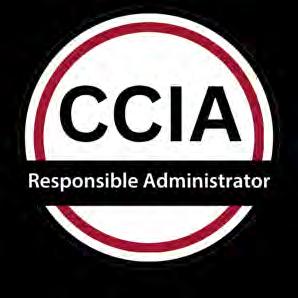
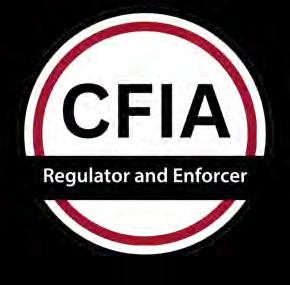
CLTS
As a Responsible Administrator, CCIA wholly owns and manages the Canadian Livestock Tracking System (CLTS). The CLTS is a national database for regulated species to record indicator (tag) information. Indicator (tag) data is uploaded to the appropriate account, allowing users to report information related to animal identification, premises details, animal movement and owner identification of lost animals. Have you signed up for your CLTS account?
Visit: clts.canadaid.ca.
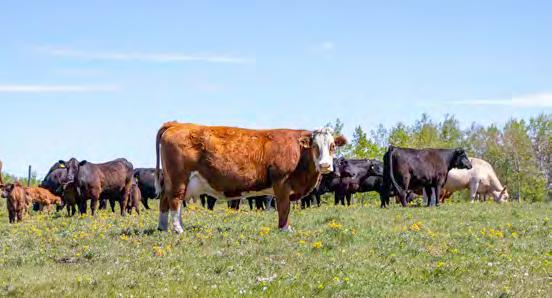
PREPARING
For the New Regulations


OBTAIN A PREMISES IDENTIFICATION NUMBER
Contact your provincial registry to apply for or update your PID account. Find contact information at canadaid.ca.
CREATE OR UPDATE YOUR CLTS ACCOUNT
Contact CCIA to set up your account or update an existing one. Remember to share your PID number with us.

IDENTIFY ANIMALS WITH APPROVED INDICATORS
Indicators and accessories are available for purchase in the CCIA Webstore at tags.canadaid.ca or by calling 1-877-909-2333 to place an order.
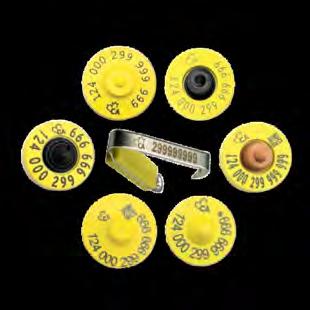
CCIA CAN HELP CCIA WEBSTORE
CCIA provides support to livestock industry parties through the provision of a dedicated support team, and through a comprehensive set of resources that are available 24/7 at the CLTS Resource Centre: support.canadaid.ca.
We have designed step-by-step user guides to walk you through everything from logging in for the first time, or how to place a tag order online. If you have questions about your responsibilities as a regulated party, contact us at 1-877-909-2333 or info@canadaid.ca
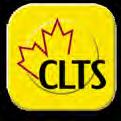
For easy access in the field, download the CLTS MOBO app, a convenient mobile version of the CLTS.
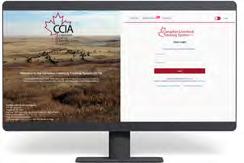
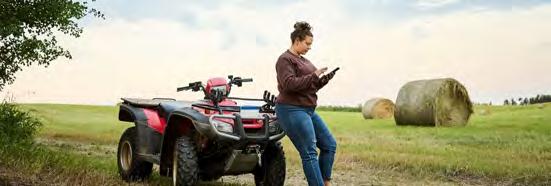
BREED SPECIFIC INDICATORS
OPTIONAL: Yellow indicators are paired with colored male studs to identify cattle breeds. Angus also offers a matched set that includes a dangle tag marked with the same ID number.
*All breed specific tag orders are verified by the breed association prior to shipping to ensure program qualifications have been met.
Angus
Gelbvieh
Hereford
Simmental
Limousin
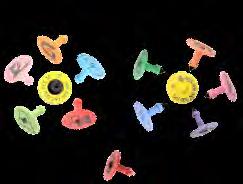
Learn more about the Canadian Livestock Tracking System (CLTS)
CLICK HERE support.canadaid.ca
CCIA Webstore
CLICK HERE tags.canadaid.ca
You can browse products on the CCIA Webstore, but to place an order, you must have a CCIA Webstore account. To create an account, visit tags.canadaid.ca, complete the registration form, and submit it. You will receive instructions by email. Alternatively, you can contact our Client Service Representatives at:
1-877-909-2333 or info@canadaid.ca
APPROVED INDICATORS
SHOWN WITH MANUFACTURER RECOMMENDED APPLICATORS
Angus Gelbvieh
Shorthorn
Simmental Limousin
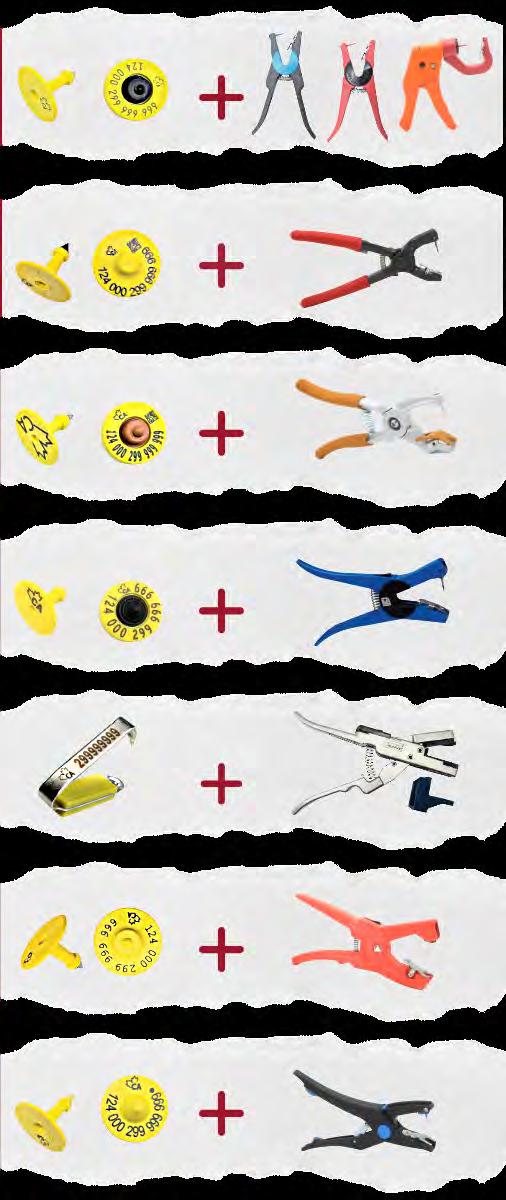
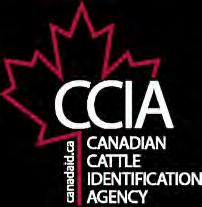

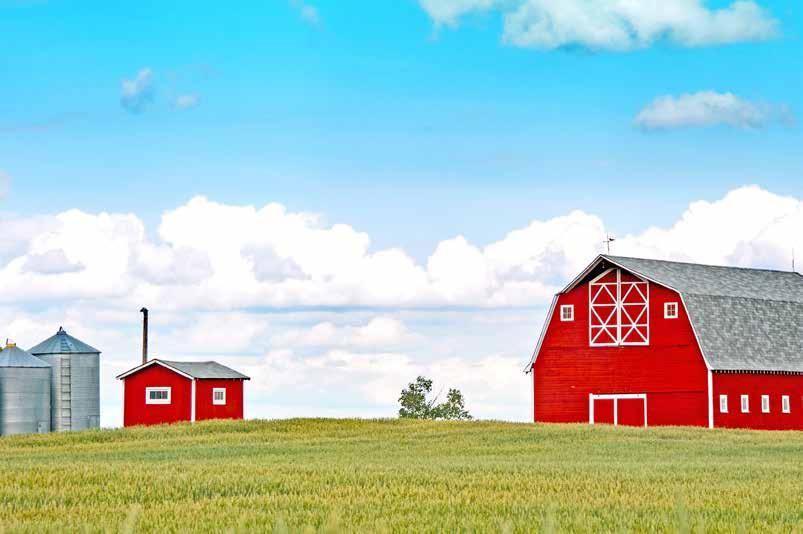
Contact Your Provincial Traceability Program to Obtain a Premises ID
Why? Premises Identification (PID) links livestock to land locations. Having a PID number for your operation allows for traceability information to be accessed quickly for the protection of animal health, public health and market access for your industry.
A PID number is expected to be required for purchasing tags (indicators) and recording animal movements when the new CFIA regulations come into effect.
Contact CCIA and Update Your CLTS Account With Your Premises ID Number
Why? It is your responsibility to share your PID with CCIA and make sure your CLTS account contact information is up to date to avoid reporting issues.
How? By calling 1-877-909-2333, emailing info@canadaid.ca or entering it yourself in your CLTS account.
Get Your FREE Provincial Premises ID Today:
BRITISH COLUMBIA
www.gov.bc.ca/premisesidprogram 1-888-221-7141
BCPID@gov.bc.ca
ALBERTA
www.alberta.ca/310-farm 310-FARM (3276) 310farm@gov.ab.ca
SASKATCHEWAN
https://premisesid. saskatchewan.ca/pid/ 1-866-457-2377
SaskPID@gov.sk.ca
MANITOBA
www.manitoba.ca/agriculture/pid 204-945-7684
traceability@gov.mb.ca
ONTARIO
www.ontariopid.com/en-CA/ 1-888-247-4999
QUEBEC
https://sites.atq.qc.ca/?language=fr https://sites.atq.qc.ca/?language=en 1-866-270-4319
NEW BRUNSWICK
www.gnb.ca/agri-traceability-premises 506-453-2666
DAAF-MAAP@gnb.ca
NOVA SCOTIA
www.novascotia.ca/agri/premisesid 902-956-2707
NSPID@novascotia.ca
PRINCE EDWARD ISLANDAND www.princeedwardisland.ca/en/pid 902-368-5654
PEIPID@gov.pe.ca
NEWFOUNDLAND www.gov.nl.ca/ffa/public-education/ agriculture/safety/pid/ 709-637-2088
nlpid@gov.nl.ca
YUKON www.yukon.ca/premises-identification agriculture@yukon.ca
